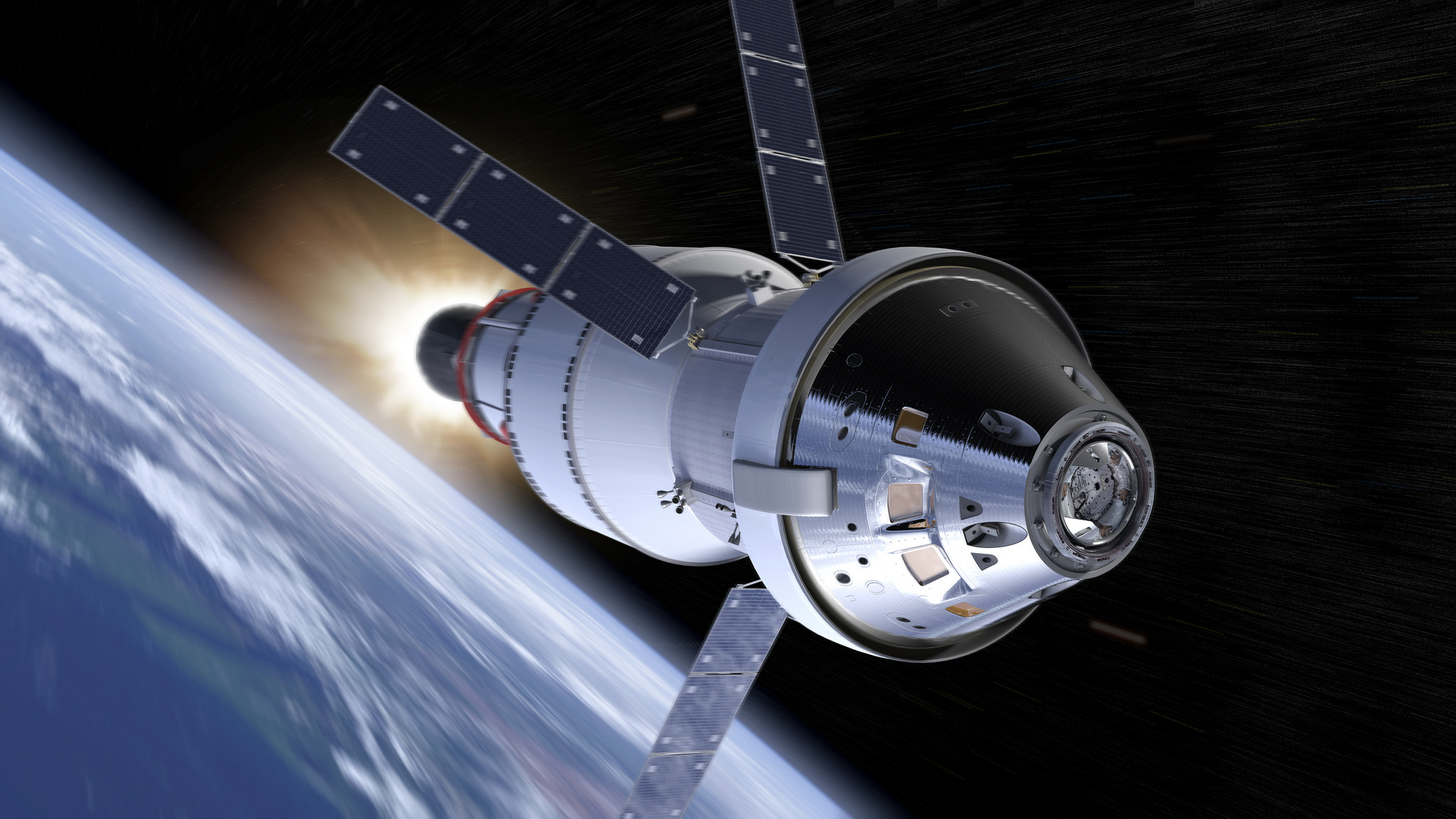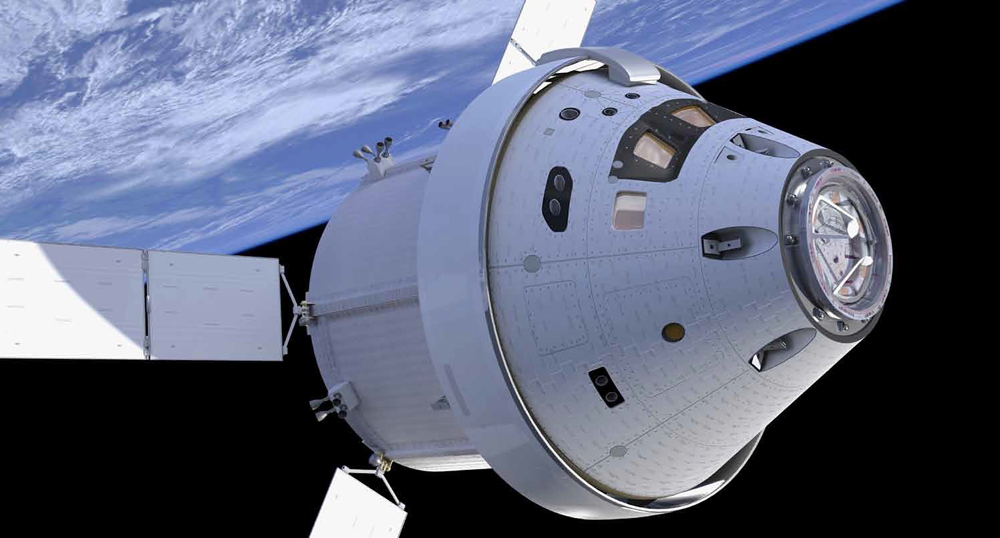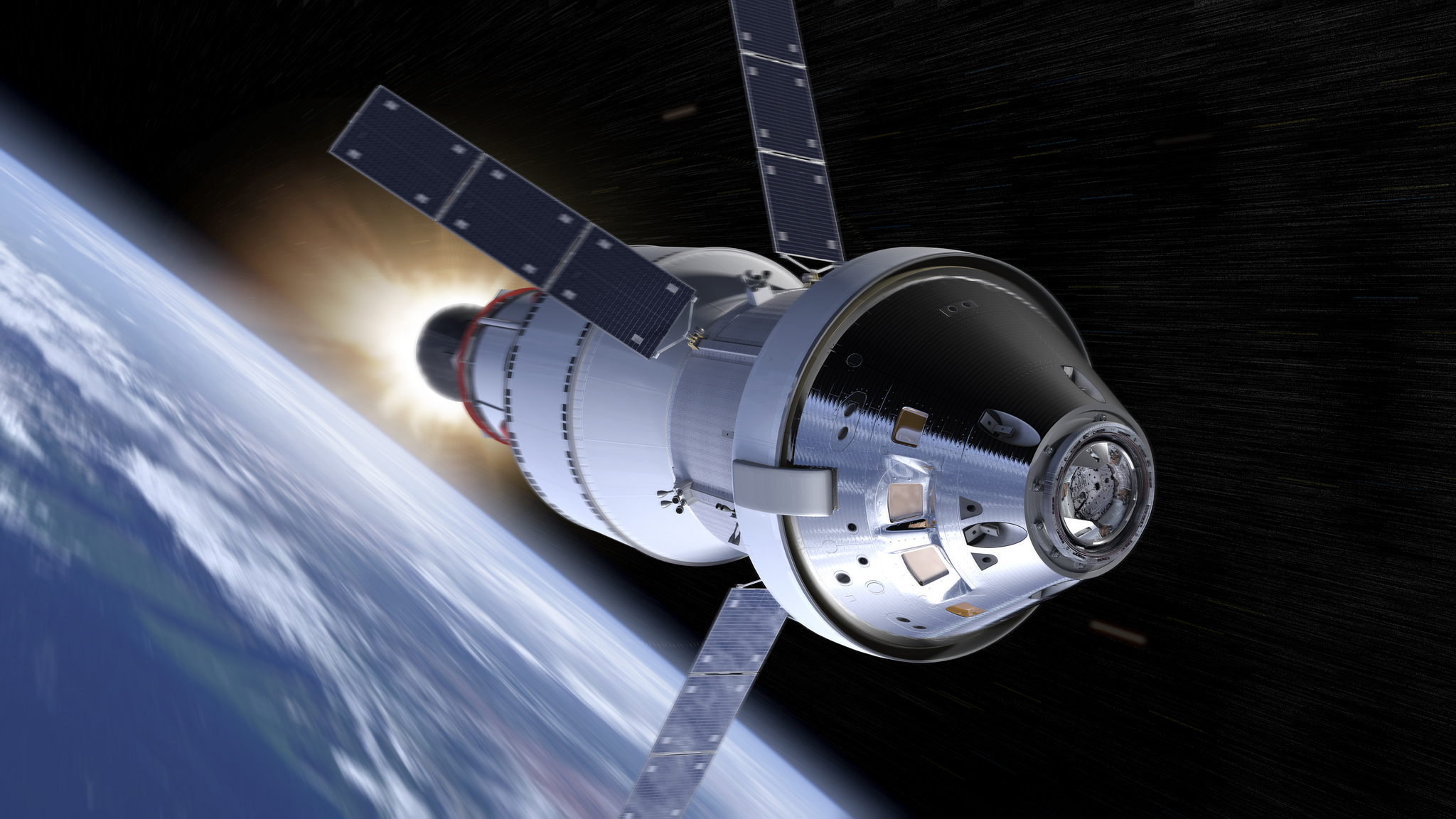
A Closer Look At The Orion Spacecraft
Each day that passes brings additional progress to the upcoming Artemis missions. NASA’s Space Launch System is being assembled and is working to become one of the biggest and most powerful rockets in the world. This is all working towards the goal of putting humans back on the Moon by 2024. At the top of NASA’s brand new rocket is Orion.
Orion is a human-rated capsule meant to usher in a new era of space exploration. The Orion spacecraft consists of a crew module, service module, and a launch abort system. All work together to safely transport humans throughout the deep space environment. Each part also ensures the astronauts are safe in case of an anomaly or error during the mission.
The Orion capsule is one of the most advanced and important pieces of technology throughout the entire SLS rocket. This is due to the fact that Astronaut safety is the number one priority. Specifically, Orion features dozens of technology advancements and innovations that have been incorporated into the spacecraft’s design. If successful, it will help put humans back on the Moon for the first time in over 50 years.
Orion’s Purpose & Background
The Orion Spacecraft’s purpose is to safely transport humans to the Moon and possibly beyond. While Orion could have capabilities for further destinations, the more focused and relevant purpose is for the upcoming Artemis missions to the Moon. While NASA will be the primary use, the Orion spacecraft is mainly developed by Lockheed Martin. Engineers have worked to make Orion capable of bringing humans deeper into space than ever before. As I mentioned prior, the spacecraft is being highlighted for its upcoming use for the Moon but in reality, it has many additional plans.
Lockheed Martin has mentioned use for possible 3-year missions to Mars, or even other near-Earth bodies such as asteroids. Everything that goes into space has to endure many tests prior to ensure everything is working properly. The more important each part is to human lives the more testing necessary. For this reason, the Orion Spacecraft has been through an immense amount of testing. Some of these tests include water landing, heat resistance, launch abort feature, and much more. All of which work to ensure the spacecraft is in perfect condition prior to any launches.
Orion Spacecraft Features
Crew Module – The first feature I want to focus on is the crew module. As the name suggests this is where the crew work and live during the mission. The module can fit up to 4 astronauts during a single mission. At the bottom of the module is a heat shield capable of withstanding temperatures around 5000 degrees Fahrenheit. This will be the temperature the capsule is exposed to on the 24,700 mph entry back from the Moon. The crew module also hosts a large list of life support systems. These keep the astronauts alive and comfortable throughout the entire mission. Without the help of our atmosphere on Earth, radiation becomes a large concern. For this reason, the crew module has advanced radiation protection designed for the harsh environment of deep space.
The module even includes a solar storm shelter to protect the crew. It also made sure to have a large list of redundant systems to keep critical elements up and running even with a possible failure or error. The crew module is in the middle of the spacecraft assembly and also hosts necessary communication and navigation technology. Specifically, this module sits beneath the launch abort system and above the service module. When landing back on Earth the module will have separated from the rest of the spacecraft. It will deploy large parachutes and perform a water landing. The module also has multiple windows and a long list of technology throughout to ensure every aspect of the mission at hand goes well.
Service Module – The next major section of the Orion spacecraft is the service module. This sits beneath or under the crew module. The service module provides Orion with power, propulsion, thermal control, air, and water. Specifically, the module has 45 engines in total including a large main engine, all of which are used for high-power deep space maneuvers. The main engine can produce 6,000 pounds of thrust. Then there are 8 smaller auxiliary engines that produce around 110 pounds of thrust each. Finally, there are 24 reaction control thrusters spread around the module. Along with life support and engines, the service module also has multiple solar wings. In total there are 4 solar wings that are each 7 meters long. Each wing has 3,750 solar cells meant to produce as much energy as possible during the mission. All together the 4 wings produce around 11kw of power. All this energy goes throughout the entire spacecraft powering different life support, navigation, and other technology.
Launch Abort System – The last major section of the Orion spacecraft is the launch abort system. The point of a launch abort system is to keep the astronauts safe. In the event of an emergency, the system’s powerful engines pull astronauts a mile up and a mile away from the rocket to safety. The entire purpose of the launch abort system is to keep astronauts safe during the initial launch process. Once the rocket is a majority out of the atmosphere the system is disconnected and burns up in the Earth’s atmosphere as it no longer serves a purpose. An example where it would be used could be soon after launch something goes wrong with the main rocket. There are errors during the launch process and the rocket is not working properly. The launch abort system will be triggered, launching the astronauts far away from the rocket expected to explode. From here the module releases parachutes and falls back towards the ground safely.
Additional Strengths Of Orion

Through the launch, time in space, and landing process, the Orion Spacecraft is put through constant stress. This includes violent vibration, heat, radiation, and more during the entire mission. Primarily Lockheed Martin and NASA have put a lot of work into ensuring Orion is strong. One of the first ways is the pressure resistance of the spacecraft. Tests of pushing and pulling different parts of the spacecraft ensure the structures can withstand intense pressure. Another has to do with the vibration of the spacecraft. Modal tests evaluate how it holds up to vibrations specifically at the connection points. Tests were even done where they blast the structures with sound waves. The point of this is to simulate the stresses and vibrations of the violent launch process. Finally, there is the trial by fire. Shock tests recreate powerful bursts of pyrotechnics that shed fairings or separate stages. All of these tests are performed on a “twin” of the Orion spacecraft. Here they recreate different modules and parts of the spacecraft and test them.
Conclusion
Agencies like NASA have big plans for the future. This includes upcoming missions to the Moon and a future goal of Mars and beyond. Planned for 2024 the first Artemis mission will launch with the Orion Spacecraft sitting on top of NASA’s Space Launch System. The Orion spacecraft consists of a crew module, service module, and launch abort system. All of which work together to provide power, life support, safety, navigation, and much more during a mission. This is one of the most important parts of a rocket because of its relation to the astronauts and their safety. With the first Artemis mission expected to happen in only a couple of years, we can expect to see this spacecraft in use. We will have to wait and see how it performs and its future use in the space industry.
